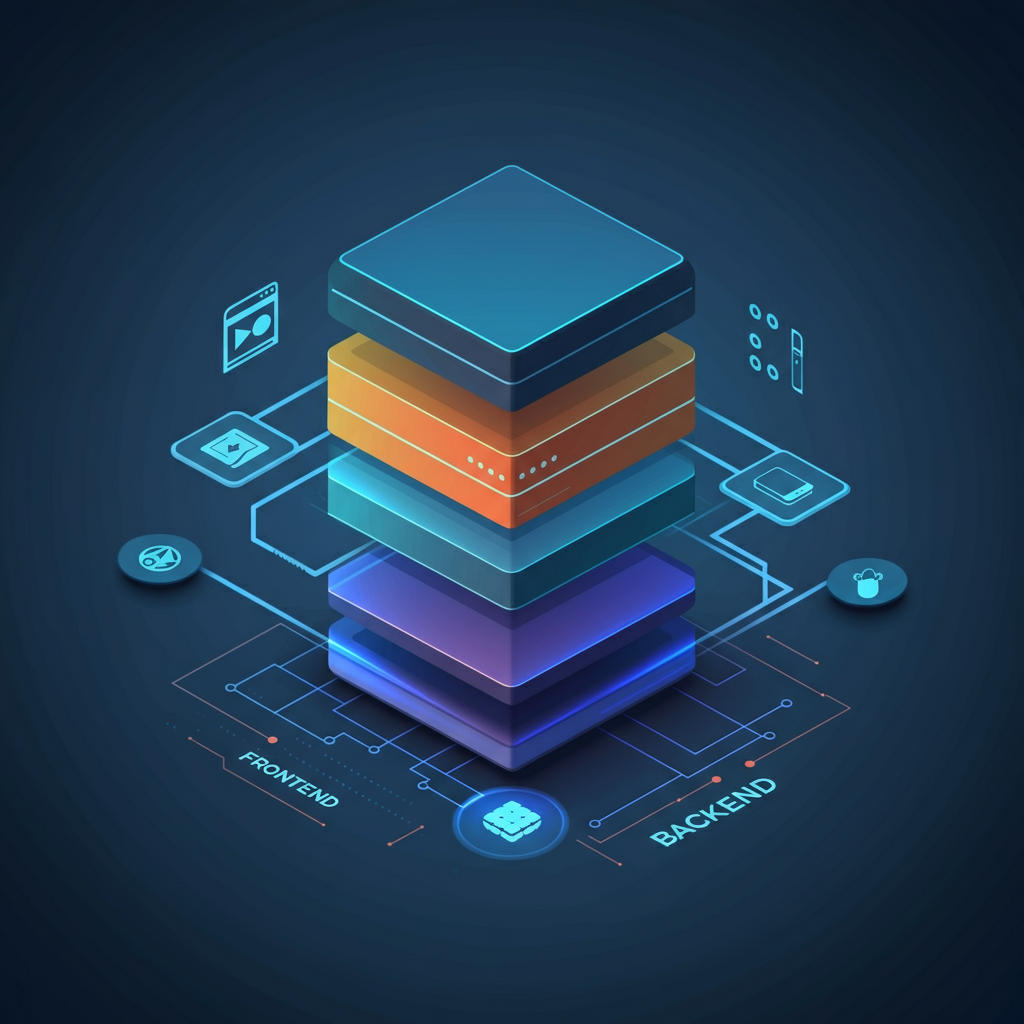Digital products require a mix of innovation, planning, and expertise. At the heart of every successful app, platform, or service lies a well-structured tech stack. What is a tech stack? Building smarter web development stacks helps create high-performance apps, platforms, and services with the right tools and frameworks. Your app’s performance, scalability, user experience, and functionality all depend on the right tools, frameworks, and technologies.
A tech stack is a collection of technologies used to power a single application. Choosing the right technologies will help you build robust applications that scale with future demands. The wrong architecture can cause costly delays and poor user experiences. The guide simplifies the tech stack and identifies key technologies that can help businesses make decisions about what to invest in.
What Is a Tech Stack?
The tech stack of your application is similar to an engine that drives its operation. What your application is capable of and how it will perform are determined by the layers that make up its tech stack. The tech stack can be made up of the following:
Frontend development focuses on the visual and interactive elements of an application, ensuring a seamless user experience.
Backend Development is responsible for managing server-side business processes as well as the lifetime of applications.
Database Management offers structured storage solutions to retrieve critical data.
By integrating your app’s layers smoothly, you will achieve operational efficiency.
Why Choosing the Right Tech Stack Matters
The technologies you select will affect your app’s functionality and growth potential. A well-designed tech stack will support your app’s performance as it grows and adds new features. Poorly selected tools, on the other hand, can slow down load handling, security patches, and new integrations.
Imagine an e-commerce app that was initially designed for small-scale use. When there is low traffic, the application performs well. However, it fails when holiday shopping begins, and customers are lost. What is the problem? What’s the problem?
Select scalable and reliable tools today to save time, money, and anxiety. You will be able to build the foundation for your success. This will lead to better customer retention and fewer technological disasters.
Key Components of a Powerful Tech Stack
Three layers are essential to each app’s functionality and to providing a positive user experience.
1. Frontend Development (User Experience)
Users will only interact with your front end, including buttons, animations, and the overall appearance. A user-friendly interface is key to keeping users happy and engaged. Consider a recipe planner app that lets users browse, select, and save menus easily. Users can become frustrated and move to another competitor without a clever interface. Frameworks such as React, Vue.js, and Angular let you create responsive, user-friendly interfaces without sacrificing sophisticated functionality.

2. Backend development is the engine of an application
It is responsible for the backend operations, such as data processing and server management. It’s responsible for user authentication, database requests, and login authentication.
Imagine, for instance, a fitness app that allows you to create and track customized workouts. The backend gathers data from users, tracks workout progress, and updates plans according to activity. Developers can create robust and secure systems using well-known frameworks such as Node.js, Django, and Ruby on Rails.
3. Database Management (Your library application)
A database contains all the information that you require, from user profiles to transaction history. How quickly and efficiently data can be retrieved depends on the design of a database.
Imagine that you are developing an app to manage a large number of patient records. PostgreSQL, MySQL, and flexible databases such as MongoDB ensure data storage and retrieval. If you select the right Database, your app will continue to run smoothly as data increases over time.
Table of Reference for Technologies
| Layer | Common Technologies |
| Frontend | React, Vue.js, Angular |
| Backend | Django, Ruby on Rails, Node.js |
| Database | PostgreSQL, MySQL, MongoDB |
Answering Mod Supporting Tools
Supporting tools simplify and add functionality to the core elements. These tools often reduce development time, improve overall performance, or accelerate deployments. Some examples are:
- Docker for building repeatable development environments.
- Kubernetes deploys and manages application development using containers to their full potential.
- ElasticSearch combines fast, robust search systems that are well-suited for large data sets.
- Firebase for user authentication and real-time database solutions.
By choosing the right support tools, you can ensure that your tech stack remains efficient and responsive even as demand increases.
The Evolving Tech Stack World
The increase in innovative methods and technologies continues the contemporary tech stack design. Some of the innovations that are defining the landscape include:
- Serverless Architecture, e.g., AWS Lambda: This technology allows developers to concentrate on writing code without having to worry about server management or resource handling. This allows applications to automatically scale with increasing demand.
- Microservices Architecture – By dividing your system into smaller independent services, you can update faster and without impacting unrelated features. This replaces monolithic frameworks that are outdated.
GraphQL Querying API: GraphQL allows clients to only ask for the information they need, optimizing efficiency.
By embracing these innovations, apps can be better equipped to handle today’s use cases and stay one step ahead of the competition.
Scalability and Success Planning
Scaling does not mean handling more users, but having systems capable of performing with increasing complexity. Modularity, distributed systems, and load balancing are key to ensuring flexibility and stability over the long term.
Airbnb is a good example of a real-world situation. The site began with simple needs and evolved its tech stack over time to support millions of users worldwide. Airbnb achieved a seamless experience for users by using microservices and then moving to the cloud.
Avoid these mistakes when planning tech stacks
Shortcuts in stack design can lead to costly mistakes. Consider the case of a platform for education that was not prepared to handle heavy traffic during registration surges. What was the result? The result? A crash that left customers frustrated and harmed the reputation of the platform.
The moral is simple. To build an infrastructure capable of functioning under pressure, but also in optimal conditions, careful planning and long-term thinking are required.
Ageless Hints To Guide Stack Design
Despite changing trends, certain principles are timeless when selecting technologies to achieve sustainable growth.
- Prioritize the Core Features: Make sure core functionality works as expected before introducing more advanced capabilities.
- Keep it Simple: Complex design can lead to unnecessarily severe failures.
- Select Trusted Tools: Use Technologies with a Good Developer Base and a Track Record of Reliability.
By following these values, you can strike the right balance between innovation and usability.
A Wrap-Up with Insights into the Future
It’s not just a technical decision but a strategic choice that will determine the future of your application. Choosing the right tech stack is key to ensuring that your application grows and adapts to the needs of today’s users while also addressing future challenges.
Staying on top of trends like serverless computing and microservices and integrating these with established tools will set you up for success in the long term.
The top web development stacks have evolved to not only meet today’s needs but also to drive the innovations of tomorrow. Companies can build smarter web development stacks by combining adaptability, scalability, and best practices—creating solutions that are ready to grow and evolve in changing times.








